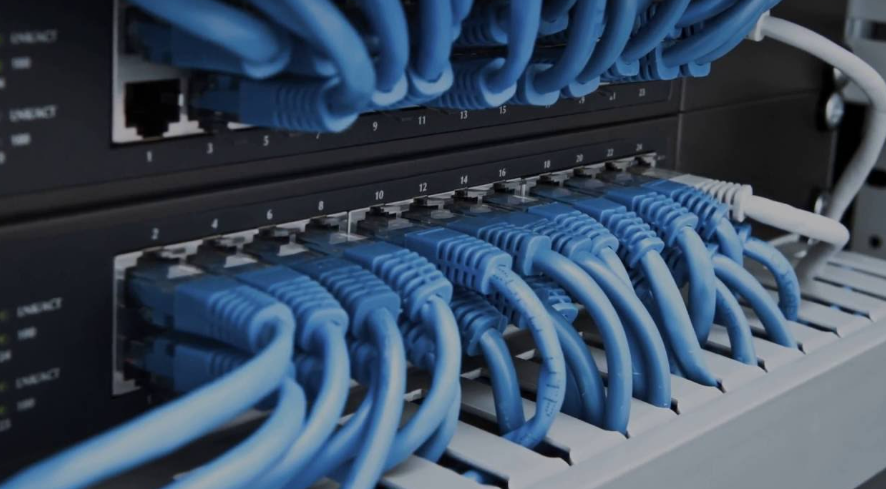How Structured Wiring Enhances Office Productivity and Network Reliability

In today’s fast-paced work environment, staying connected isn’t just a luxury—it’s a necessity. Whether you run a small business or a multi-floor office, your team depends on fast, reliable internet and seamless communication to get things done. That’s where structured wiring comes in.
Structured wiring may sound like a technical term, but at its core, it simply refers to the organized setup of cables and hardware used for communication systems—think Internet, phones, security cameras, and more. Unlike random wiring that’s patched together as needs arise, structured wiring is planned, streamlined, and built for long-term efficiency.
Let’s explore how this modern wiring approach can dramatically boost office productivity and network reliability and even help with workplace resource management.
What Is Structured Wiring?
Structured wiring is a comprehensive system of cables and hardware that forms the backbone of your office’s network and communications infrastructure. It usually includes:
- Data cables (Ethernet)
- Phone lines
- Audio/video cables
- Security system wiring
All of these are routed to a central panel—kind of like a control hub—which makes it easier to manage, upgrade, and troubleshoot everything from one place.
1. Structured Wiring Keeps Your Office Connected and Productive
In an office setting, even a few minutes of downtime can be costly. Slow internet, dropped calls, or printer issues can halt workflow and reduce team efficiency.
Structured wiring eliminates these headaches by providing:
- Faster data transfer speeds
- Stable internet connections
- Clearer phone calls
- Easy access to shared devices like printers or servers
When your systems are wired properly, they work like they’re supposed to. Your team can focus on doing their best work without being interrupted by tech issues.
2. Scalability for the Future
As your business grows, so does your technology. You might hire more employees, upgrade your computers, or add smart devices. Structured wiring makes it easy to scale without chaos.
Because everything is planned and centralized, adding new equipment or expanding your network doesn’t mean tearing open walls or playing cable spaghetti.
It’s a future-ready investment that supports both your current needs and long-term goals.
3. Better Network Reliability
Random or outdated wiring setups often lead to unstable connections. You might notice:
- Frequent internet outages
- Lag during video calls
- Slow upload/download speeds
Structured wiring minimizes these issues. It separates different types of traffic (like phone, internet, and video) to prevent interference and bottlenecks. Plus, high-quality cabling reduces signal loss, meaning a smoother and more reliable network.
A reliable network keeps your team connected, collaborative, and confident—especially when working on important projects or client meetings.
4. Enhanced Office Safety and Cleanliness
Cables running all over the place are more than just an eyesore—they’re a tripping hazard. Structured wiring eliminates messy cable clusters by neatly routing wires behind walls or under floors.
This not only improves safety but also enhances the look and feel of your workspace. A clean, clutter-free office promotes a professional atmosphere and can even boost employee morale.
5. Easier Maintenance and Troubleshooting
Let’s face it—tech problems happen. But with structured wiring, finding and fixing those issues is way easier.
Since everything is labeled and organized, your IT team (or service provider) can quickly locate problems and fix them without wasting time.
This also means fewer disruptions to your workday, faster repairs, and reduced downtime.
6. Supporting the Resource Management in Your Office
Here’s where the resource management comes into play. Structured wiring helps you make the most of your office resources—whether that’s time, equipment, or people.
Here’s how:
- Efficient network performance reduces wasted time troubleshooting issues.
- Centralized control allows better monitoring and management of devices and systems.
- Scalable systems mean you’re not constantly investing in new infrastructure.
- Consistent connections allow employees to work efficiently without interruptions.
When your tech works smoothly, your team works smoothly. That’s the ultimate goal of good resource management.
7. Boosts Collaboration and Communication
From video conferencing to file sharing, your team relies on constant communication. Structured wiring ensures that all of your devices—phones, computers, printers, and more—are connected and working together in sync.
It reduces dropped calls, lag, and downtime so your team can stay focused and connected, no matter where they’re working from.
8. Prepares Your Office for Smart Technology
The modern workplace is becoming smarter with tools like:
- Smart thermostats
- Video surveillance
- Access control systems
- Cloud-based phone systems
All of these devices need strong, reliable connections. Structured wiring is like the foundation of a smart office. It ensures that all your new tech works seamlessly with your existing setup.
9. Increases Property Value
Structured wiring isn’t just good for productivity—it’s also an asset for your building.
If you ever sell or rent out your office space, potential buyers or tenants will see the value of a modern wiring system that’s ready to handle the demands of today’s businesses.
Think of it as a long-term investment that pays off both now and in the future.
10. Saves You Money in the Long Run
While structured wiring requires some upfront cost, it’s much cheaper than constantly fixing or upgrading a patchy network. With fewer outages, faster speeds, and easier upgrades, you’ll see savings on:
- IT support
- Downtime costs
- Replacement equipment
It’s a smart financial move for any business serious about long-term growth.
Real-World Example: Before and After Structured Wiring
Before: A marketing agency had messy, outdated wiring and frequent issues with printers disconnecting, dropped video calls, and team frustration. Their IT person spent more time patching problems than planning new improvements.
After: They installed structured wiring with a centralized control panel. Suddenly, calls were crisp, files uploaded in seconds, and the team could enjoy meetings again. Their IT staff could finally focus on innovation instead of just maintenance.
Final Thoughts
Structured wiring might not be the flashiest part of your office setup, but it’s one of the most important. It enhances office productivity by ensuring your team can work smoothly and stay connected. It boosts network reliability, supports resource management, and prepares your workspace for future growth.
Whether you’re moving into a new office or upgrading an existing one, investing in structured wiring is a decision your business won’t regret.
FAQs
1. Is structured wiring expensive to install?
Structured wiring does involve some upfront cost, especially if you’re wiring a large office. However, the long-term savings in maintenance, downtime, and upgrades often make it well worth the investment.
2. Can structured wiring support wireless networks too?
Absolutely! While structured wiring is physical cabling, it supports and enhances your wireless systems. Wired connections can handle high-volume data, reducing pressure on your Wi-Fi network for a more stable experience overall.
3. What kind of businesses need structured wiring?
Any business that relies on the internet, phones, or networked devices can benefit—this includes offices, medical practices, schools, call centers, and more. If you use tech every day, structured wiring helps you use it better.





